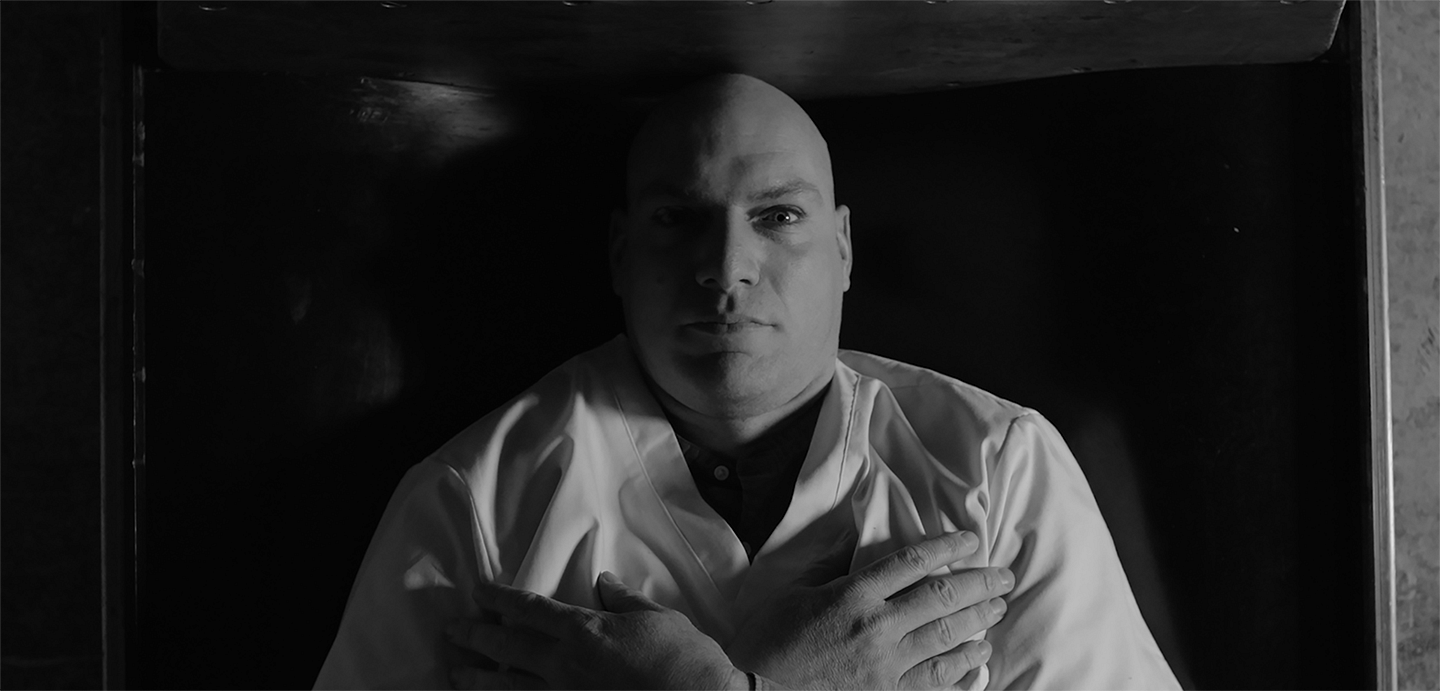NOSFERATU (The Undead)
April 22–June 17, 2018
500 University Ave, Rochester
New York, NY 14607
USA
The Memorial Art Gallery of the University of Rochester (MAG) is pleased to announce NOSFERATU (The Undead), a film installation by New York-based artist Javier Téllez that focuses on cinema and mental illness. The work will premiere at MAG on April 22 and remain on view through June 17. NOSFERATU (The Undead) is the first exhibition to be presented as part of “Reflections on Place,” a series of media art commissions inspired by the City of Rochester, New York, and curated by world-renowned authority on the moving image John G. Hanhardt.
Téllez’s film was inspired by Nosferatu, eine Symphonie des Grauens, the expressionist silent masterpiece directed by F. W. Murnau in 1922. Téllez made the work in collaboration with people living with mental illness after a series of workshops that he conducted on the subjects of vampirism and the representation of psychiatric institutions in film. Combining black-and-white 16mm and color digital film, NOSFERATU (The Undead) was shot at the Eastman Kodak factory, the Dryden Theatre of the George Eastman Museum, and at the Main Street Armory, all in Rochester. “We chose a vampire for the main character of the film,” said Téllez, “because we wanted to reflect on light and darkness as the fundamental principles of cinema, and to focus on those who are stigmatized by being different and condemned to invisibility.”
The mise en scène of NOSFERATU (The Undead) comprises a “film inside a film,” juxtaposing scenes from Nosferatu, eine Symphonie des Grauens with additional scenes the artist developed with his collaborators who act as fictional patients in a set representing a ward at an insane asylum circa 1960. Téllez shows them simultaneously as actors and spectators of their own film. This reversal of roles is a recurrent motif in Téllez’s work, and it is a way to destabilize preconceived notions about the perception of mental illness. NOSFERATU (The Undead) also mixes documentary and fiction, including aspects of the manufacturing of celluloid film at the Kodak factory. It documents a performance of the internationally renowned silent film accompanist Philip C. Carli, the George Eastman Museum’s resident musician, who provides a superb piano accompaniment for Murnau’s silent film.
Javier Téllez’s film projects involve close collaborative ventures with disenfranchised communities, such as psychiatric patients or people with disabilities, allowing them to participate in the creative process in order to produce a dignified and non-stereotyped image of themselves. Combining different approaches to filmmaking, Téllez opens a dialogue that provides a fresh interpretation of classical myths, private and collective memories, and historical references.
“Javier Téllez is an innovative artist who has created a distinguished body of work. He has made a major contribution to the art of the moving image,” said MAG’s Consulting Senior Curator of Media Arts John G. Hanhardt. “His work is risk-taking and full of surprises, and is the result of a great deal of research, of really plumbing a place, its stories, and people. For this project he explores Rochester’s contributions to and influence on global culture as the historical epicenter of the filmic medium.”
In advance of the launch of this first of three new media art commissions, MAG’s Mary W. and Donald R. Clark Director Jonathan P. Binstock stated, “the series ‘Reflections on Place’ is a crowning achievement of John Hanhardt’s work as a pioneering curator of media art. He was born, raised, and educated in Rochester. With his deep knowledge of the region, John identified three extraordinary artists to be inspired by our history, politics, and culture. We are proud to present the first of these commissions, a new installation by the internationally renowned artist, Javier Téllez.”
For Téllez’s project, MAG has constructed a theater with rear-screen 4K projection, Dolby 5.1 surround sound, and theater seating in its newly renovated Docent Gallery.



